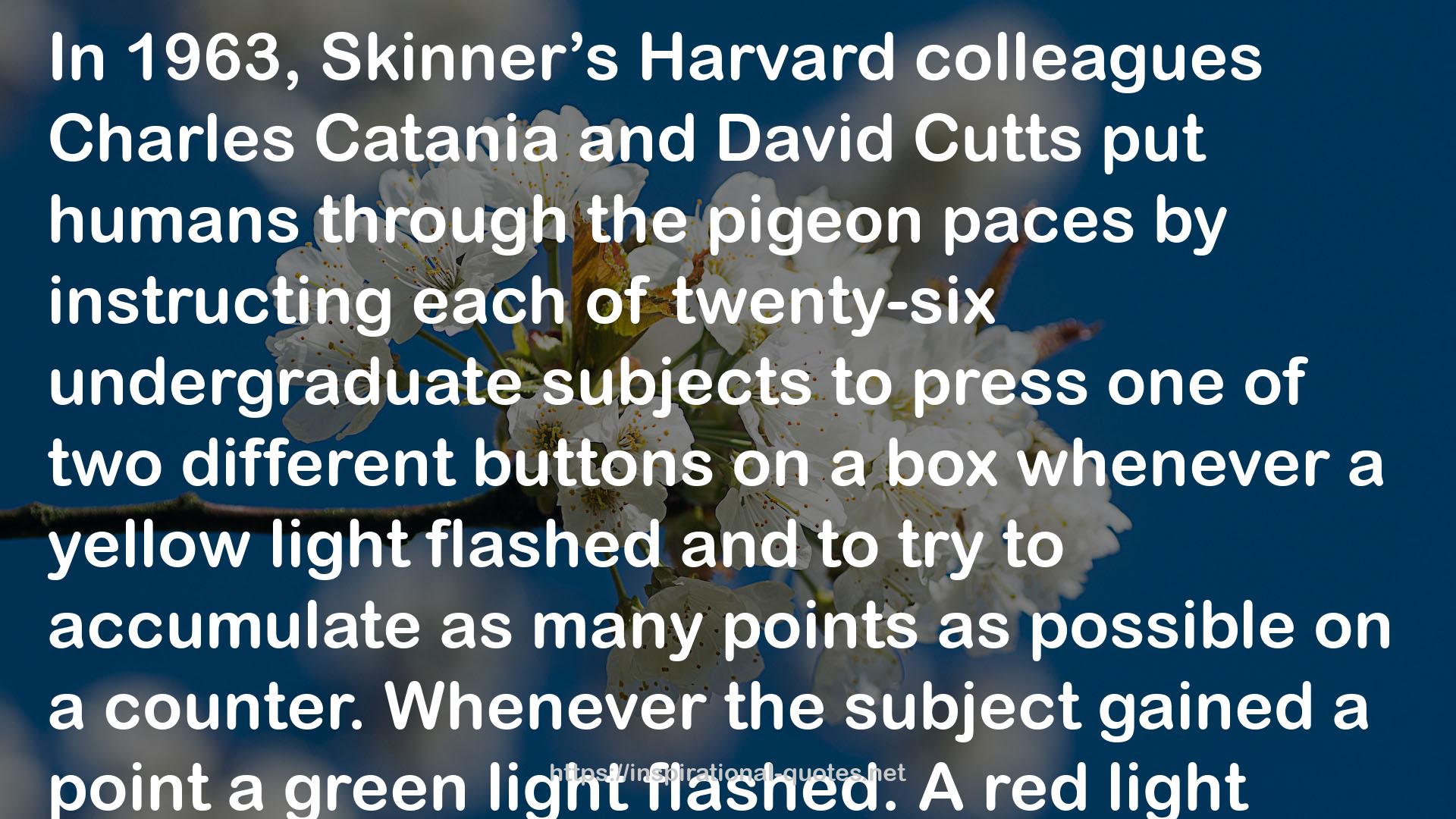" In 1963, Skinner’s Harvard colleagues Charles Catania and David Cutts put humans through the pigeon paces by instructing each of twenty-six undergraduate subjects to press one of two different buttons on a box whenever a yellow light flashed and to try to accumulate as many points as possible on a counter. Whenever the subject gained a point a green light flashed. A red light indicated that the session was over, which was when the subject reached one hundred points. Unbeknownst to the subjects, only the right button could generate points, and those points were delivered on a VI schedule of reinforcement, with an average time between point delivery of thirty seconds. The results were revealing in that human brains are no less superstitious than bird brains: most of the subjects quickly developed superstitious button-pushing patterns between the left and right buttons, because if they pressed the left button just before the right button happened to deliver a point, that particular pattern was reinforced. Once subjects established a superstitious button-pushing pattern, they stuck with that pattern throughout the session because they continued to be reinforced for it. "
― Michael Shermer , The Believing Brain: From Ghosts and Gods to Politics and Conspiracies How We Construct Beliefs and Reinforce Them as Truths
